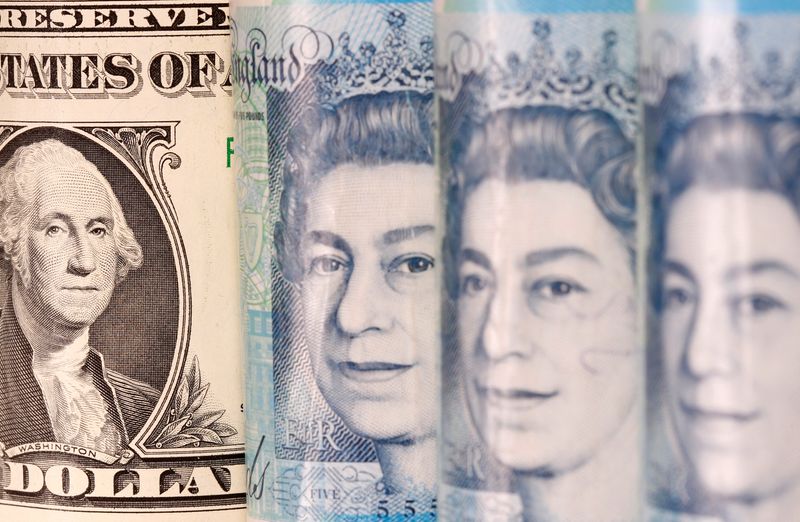By Harry Robertson
LONDON (Reuters) – The pound held steady on Monday after falling to a six-month low the previous week as the dollar surged on the back of Donald Trump’s victory in the U.S. presidential election.
Sterling was last up 0.1% at $1.2627, from $1.2598 on Friday, its lowest since mid-May.
Trump’s Nov. 5 election win has caused the dollar index to surge around 3% as investors bet trade tariffs and lower taxes will boost growth and inflation, leading to fewer Federal Reserve interest rate cuts.
Those expectations have caused Treasury yields to rise sharply, lifting the dollar as U.S. bonds become more attractive.
Sterling has fallen around 2.7% since the election although it has fared better than the euro, which many traders think will bear the brunt of higher U.S. tariffs which are likely to focus on China, the European Union and Mexico.
“Recent sterling weakness has principally been a story of U.S. dollar strength,” said Matthew Amis, investment director at asset manager abrdn.
“From the GBP (pound) perspective, we see little reason for the recent slide to recorrect,” he said. “The Bank of England may well be continuing to signal gradual cuts, but the UK growth story will need to be more compelling for markets to shift.”
Data on Friday showed the UK economy contracted unexpectedly in September and growth slowed to just 0.1% over the third quarter, driving a sixth day of losses for the pound.
Traders see a roughly 80% chance the Bank of England will cut rates again next month, and see rates falling by around 65 basis points to just above 4% by the end of next year. The BoE rate is currently 4.75%.
The relatively slow pace of expected cuts has supported the pound this year, which is down 0.8% against the dollar in 2024, compared to a 4.3% drop in the euro.
The euro fell to a 2-1/2 year low against the pound of 82.62 pence early last week as investors bet Trump’s tariffs would be worse for the euro zone than Britain.
It was last up 0.23% at 83.70 pence, after also rising on Friday in the wake of the weak British data.

